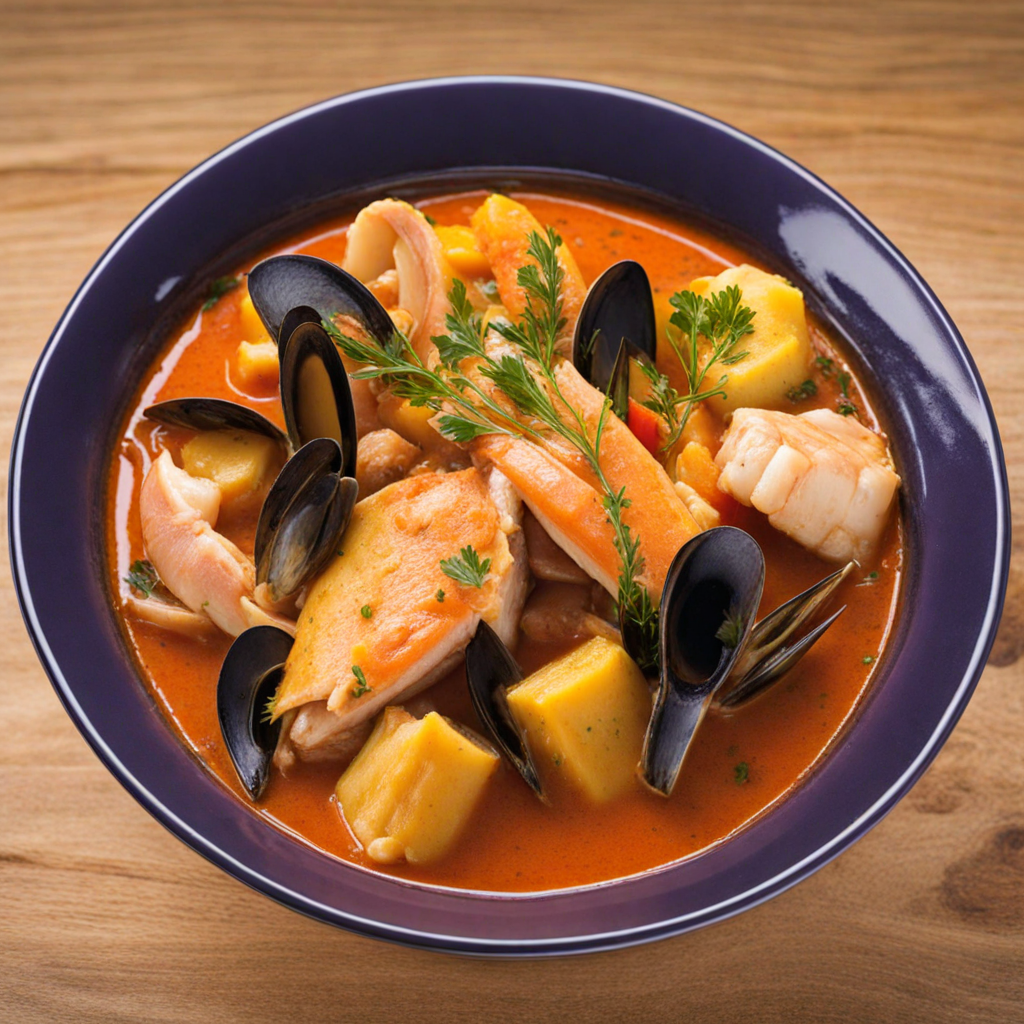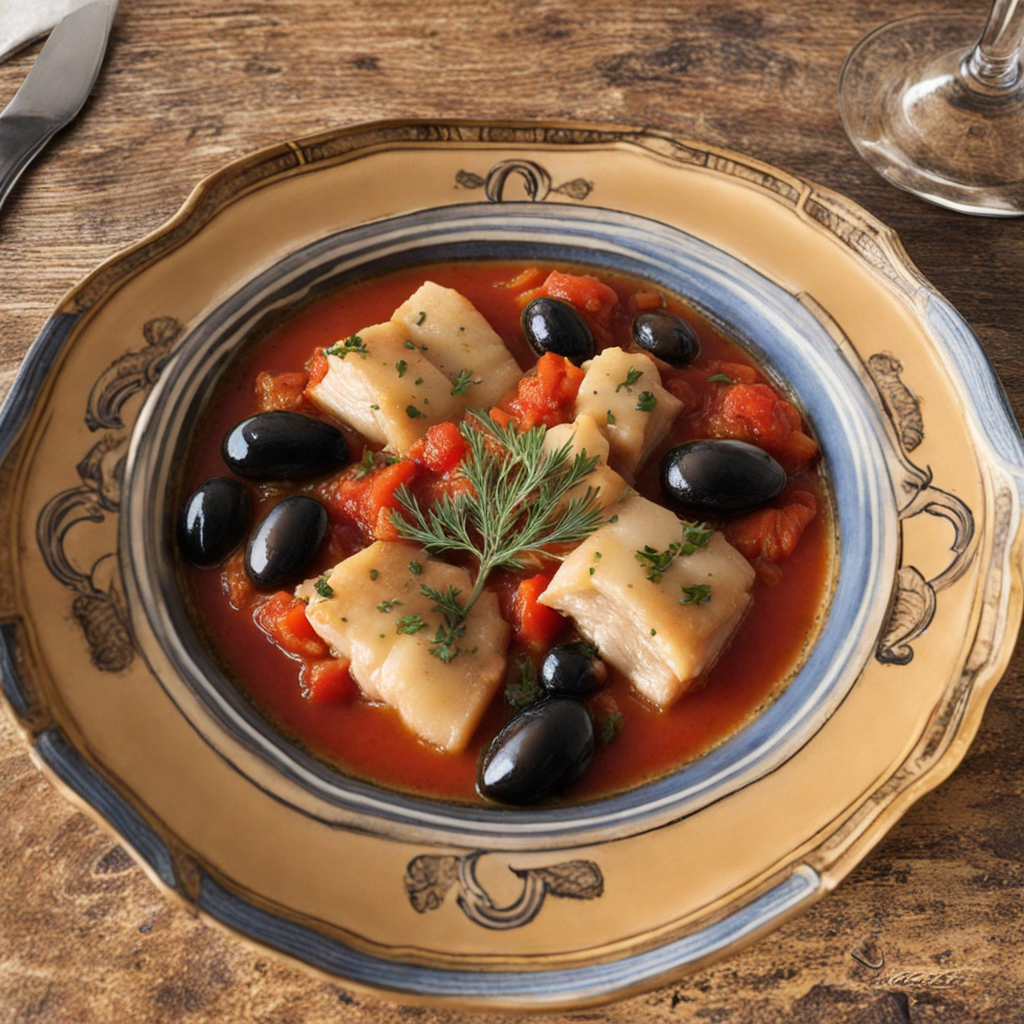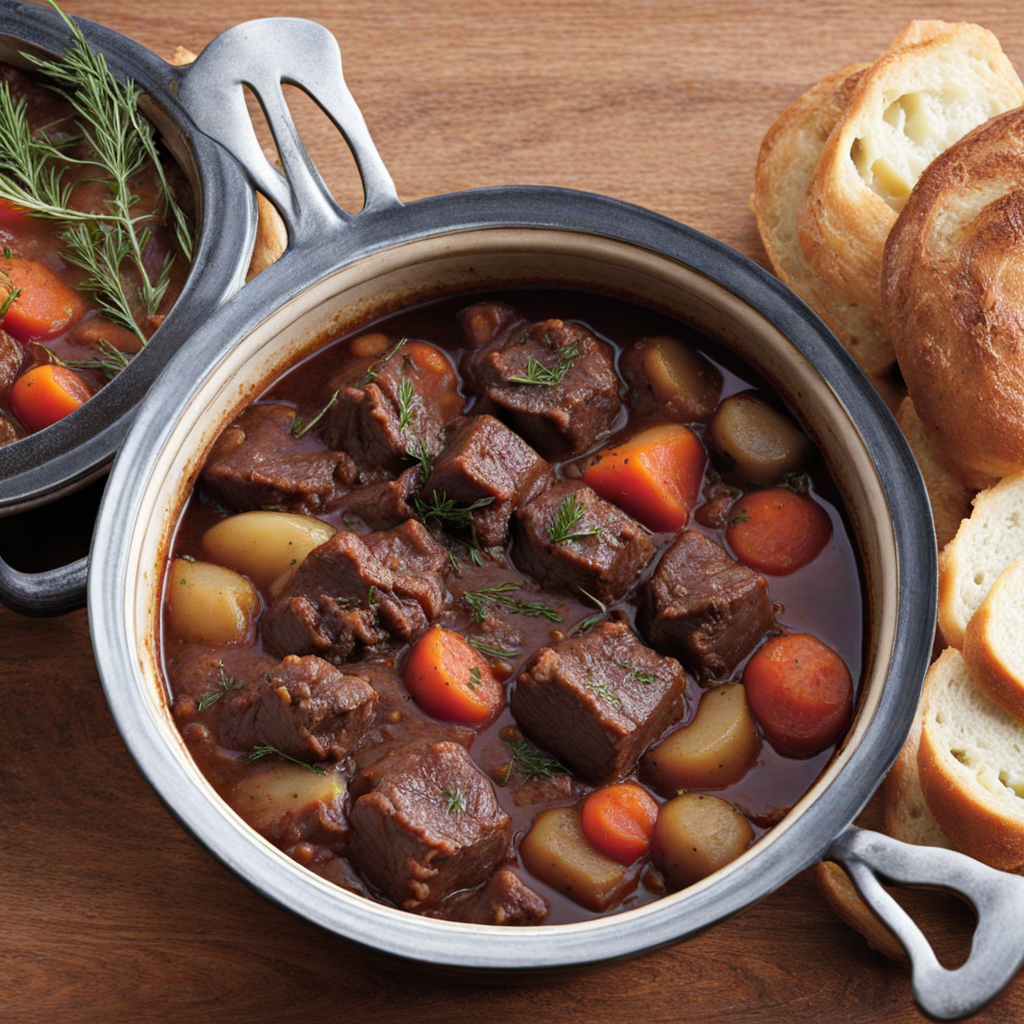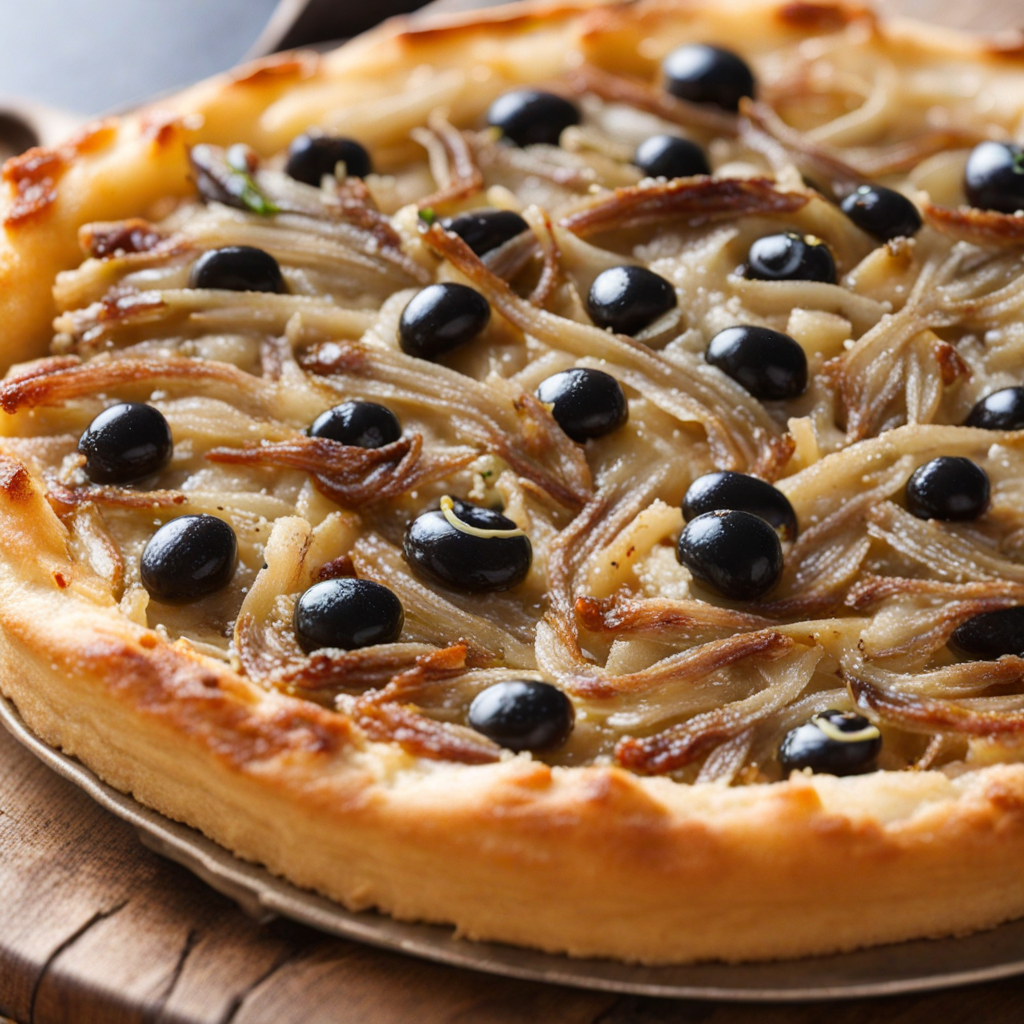Bouillabaisse
Bouillabaisse, a traditional dish hailing from the coastal regions of Monaco, is a rich and aromatic fish stew that perfectly encapsulates the essence of Mediterranean cuisine. This dish is a symphony of flavors, featuring a variety of fresh fish and shellfish, which are often sourced from the bountiful waters of the Mediterranean Sea. The base of the stew is typically infused with a medley of herbs and spices, including saffron, fennel, and garlic, creating a fragrant broth that complements the seafood beautifully. The addition of tomatoes and orange peel adds a subtle sweetness and acidity, balancing the dish and enhancing its overall complexity. As the fish and shellfish simmer gently in the broth, they absorb the aromatic flavors, resulting in a dish that is not only hearty but also deeply satisfying. The selection of seafood can vary, but it often includes local varieties such as red mullet, monkfish, and mussels, all contributing to the dish's unique taste profile. Bouillabaisse is typically served with a side of rouille, a garlicky mayonnaise made with saffron, which adds a creamy texture and a touch of heat when spread on crusty bread. This combination creates a delightful experience for the palate, inviting diners to savor each spoonful. In Monaco, bouillabaisse is not just a meal; it is a cultural experience that reflects the region's maritime heritage and culinary traditions. Enjoyed best in seaside restaurants, this dish is often accompanied by a glass of local rosé or white wine, enhancing the flavors and making it a perfect dish for sharing with friends and family. Whether you are a seafood aficionado or a curious foodie looking to explore new tastes, bouillabaisse promises to deliver a deliciously unforgettable experience that transports you to the sun-kissed shores of the Mediterranean.
How It Became This Dish
The History of Bouillabaisse: A Culinary Jewel of Monaco #### Origins of Bouillabaisse Bouillabaisse is a traditional Provençal fish stew that has become emblematic of the Mediterranean coastal cuisine, particularly in the south of France. While its roots are primarily traced back to the port city of Marseille, the dish also has a close association with the culinary traditions of Monaco, a tiny principality nestled between France and Italy on the French Riviera. The origins of bouillabaisse can be traced to the humble beginnings of fishermen in the Mediterranean. In the early days, fishermen would prepare a simple stew from the catch of the day, using the less desirable fish that could not be sold at the market. The name "bouillabaisse" itself derives from two Provençal words: "bouillir," meaning to boil, and "abaisser," meaning to reduce or lower, which refers to the cooking process of simmering the fish in a broth made from water, herbs, and spices. The dish's evolution can be linked to the social and economic changes experienced in the region over centuries. By the 18th century, bouillabaisse began to gain recognition beyond local fishermen's homes, transitioning from a working-class staple to a beloved dish that would eventually grace the tables of the bourgeoisie and the elite. #### Cultural Significance In Monaco, bouillabaisse embodies more than just a culinary delight; it serves as a symbol of the principality's rich maritime heritage and its connection to the Mediterranean Sea. The dish reflects the cultural melting pot of the region, influenced by flavors and cooking techniques from both French and Italian cuisines. This integration is particularly significant in Monaco, where the local culinary landscape is characterized by a blend of these two cultures. The Monegasque version of bouillabaisse may differ slightly from its Marseille counterpart, incorporating local fish varieties and ingredients. For instance, species like red mullet, monkfish, and rockfish are often featured, alongside aromatic herbs such as saffron, fennel, and thyme. The use of local produce enhances the dish's connection to the land and sea, making each preparation a unique expression of place. Bouillabaisse also plays a role in various cultural celebrations and gatherings in Monaco. It is often served during festive occasions and family reunions, reinforcing social ties and community spirit. The dish's communal nature, where it is traditionally shared among family and friends, emphasizes the importance of togetherness in Mediterranean culture. #### Development Over Time As bouillabaisse gained popularity, its preparation became more refined, leading to the establishment of culinary traditions and variations that would be passed down through generations. The dish's rise to prominence was influenced by the growing tourism industry in the region, particularly in the late 19th and early 20th centuries. As affluent visitors flocked to Monaco for its glamour and beauty, local chefs began to elevate bouillabaisse by incorporating high-quality ingredients and artistic presentation. Restaurants in Monaco and Marseille started to compete for the title of serving the best bouillabaisse, leading to a culinary arms race of sorts. Chefs began to innovate with their recipes, experimenting with different fish, shellfish, and flavor combinations. The classic broth, often enriched with tomato and orange peel, became a canvas for culinary creativity. Some chefs even began to serve bouillabaisse with a side of rouille, a spicy garlic mayonnaise, which added a delightful kick to the dish. By the mid-20th century, bouillabaisse had transitioned from a peasant dish to a gourmet experience, featured in upscale restaurants and celebrated in food festivals. Its reputation as a sophisticated dish was cemented by prominent chefs who showcased bouillabaisse on their menus, further elevating its status in the culinary world. #### Modern Interpretation In contemporary Monaco, bouillabaisse continues to thrive, reflecting the principality's commitment to preserving its culinary heritage while embracing modern sensibilities. The dish remains a staple in many local restaurants, often prepared with a focus on sustainability and the use of seasonal ingredients. The culinary landscape has also expanded to include variations that cater to diverse palates, such as vegetarian or vegan interpretations that maintain the essence of the original dish while adapting to changing dietary preferences. Additionally, the rise of food tourism has led to a renewed interest in bouillabaisse, with visitors eager to experience authentic local cuisine. Cooking classes and culinary tours centered around bouillabaisse offer tourists the opportunity to engage with the dish on a deeper level, learning about its history and preparation from local chefs. Bouillabaisse has also found its way into popular culture, being featured in cookbooks, television shows, and culinary competitions, where chefs showcase their skills in preparing this iconic dish. Its presence in global gastronomy has further solidified bouillabaisse's status as a symbol of Mediterranean cuisine. #### Conclusion Bouillabaisse, with its rich history and cultural significance, serves as a testament to the culinary heritage of Monaco and the broader Mediterranean region. From its humble beginnings as a fisherman's stew to its current status as a gourmet delicacy, bouillabaisse has undergone a remarkable transformation, embodying the spirit of the sea and the traditions of the people who inhabit this vibrant coastal area. As the world continues to evolve, bouillabaisse remains a cherished dish, reminding us of the importance of community, culture, and the shared joy of food. Whether enjoyed in a bustling restaurant overlooking the Mediterranean or prepared at home for a family gathering, bouillabaisse continues to captivate palates, bridging the past with the present and ensuring that this culinary jewel of Monaco thrives for generations to come.
You may like
Discover local flavors from Monaco







